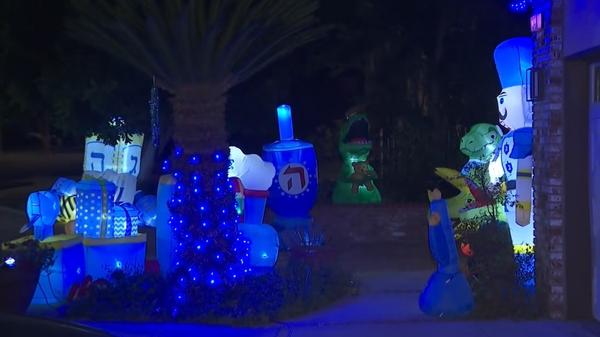In today’s superbike wars, it’s easy to get caught up in the spectacle of wings, launch control, and MotoGP-derived dashboards. The BMW S 1000 RR flexes its Euro-tech muscle. The Ducati Panigale V4 struts its Italian drama. But ask anyone who’s been around long enough and they’ll tell you—before all the spec-sheet battles and social media bragging rights, there was Honda. And if any brand has earned the right to quietly shake the industry with a single patent filing, it’s them.
Honda doesn’t just build fast bikes. They build foundations. The original Fireblade didn’t show up with brute horsepower. It showed up with smarter engineering. In the 90s, it broke the mold by shedding weight instead of chasing top-end numbers, carving out the “Total Control” philosophy that made it one of the most balanced sportbikes of its time. Over the years, the Fireblade evolved from a streetfighter with race leanings into a full-blown superbike weapon, with the CBR1000RR-R Fireblade SP being the most extreme iteration yet.
Now, Honda’s latest patent suggests the Fireblade’s legacy might be headed into electric territory. And it’s not just a sketch on paper. This new layout carries the kind of engineering focus that hints at serious intent.
So what’s actually in the patent?

At first glance, it describes a "saddle riding type electric vehicle." But once you peel back the technical jargon, what you’re looking at is a high-performance electric motorcycle architecture with some pretty clever tricks up its sleeve.
The big one is how the motor is mounted behind the swingarm pivot and integrated into a rigid unit case that bolts directly to the frame. This case doesn’t just house the motor—it also connects to both upper and lower cross members on the frame and carries some of the structural load normally handled by a traditional engine. Instead of the swingarm pivoting off the motor housing alone (like in many EV concepts), this design has the swingarm pivot supported by both the motor unit and the frame’s pivot blocks. That means better stiffness, more consistent handling, and fewer compromises in tuning.



And it gets better. Those pivot blocks? They’re modular. Honda can swap them out to adjust swingarm pivot position or footpeg mounting points, giving them the ability to fine-tune geometry without retooling an entire frame. Smart stuff—especially for a manufacturer that already builds multiple superbike variants with differing ergonomics and setups.
Even the rear shock layout is interesting. This setup uses a rear shock mounted longitudinally over the motor. It connects to the frame up front and the swingarm at the rear, almost like something you’d see on a high-performance enduro or freeride mountain bike. This setup allows for more stroke without increasing the wheelbase. Plus, it leaves enough room for a decent-sized battery.
If this all sounds race-inspired, that’s because it probably is. And if you’re wondering where Honda might have tested these concepts before, allow me to introduce you to Mugen.

To the uninitiated, Mugen might seem like just another performance brand. In reality, it's sort of like Honda’s spiritual twin. Founded by Soichiro Honda’s son, Mugen Motorsports has always been Honda’s shadow laboratory. Think of them as the company’s unofficially official skunkworks building and racing things Honda can’t always put its name on (at least not right away).
Case in point: the Mugen Shinden series. These were the electric race bikes that absolutely dominated the Isle of Man TT Zero from 2014 to 2019. They weren’t mass-produced. They weren’t road-legal. But they were fast. And they used a layout eerily similar to what’s being described in this patent: rear-mounted motor, central battery, mass centralization, and a chassis designed for speed without compromise.
The Shinden program showed that Honda (through Mugen) could build a world-beating electric superbike if it wanted to. And this new patent kinda looks like someone finally decided to take what they learned on the mountain course and bring it back to the road and track.
So what does all this mean for us?

A few things, actually. For one, it suggests that Honda isn’t just waiting around for battery tech to catch up. They’re already solving the problems of structure, layout, and geometry in anticipation of what comes next. And that “next” could very well be a spiritual successor to the Fireblade.
Imagine a CBR1000RR-R EV—same cornering poise, same aggressive feel, but powered by electrons instead of gasoline. With modular chassis tuning and a layout that supports serious mass centralization, it wouldn’t just be a token electric model to check a regulatory box. It could be a real contender.
Or what if we go even bigger? Ducati is currently the sole supplier for the MotoE World Championship, but there’s nothing stopping that grid from opening up in the future. With tech like this, Honda could throw its hat into the ring and challenge Ducati on equal footing, on the same circuits, under the same conditions. That’s the kind of rivalry MotoGP fans would love to see play out in the electric arena.
Of course, this is still just a patent. There’s no timeline, no prototype, no flashy teaser videos. But if you’ve followed Honda for long enough, you know that when they start filing paperwork like this, it usually leads somewhere. They don’t do things for show. They do them because they have a plan.
Source: WIPO







